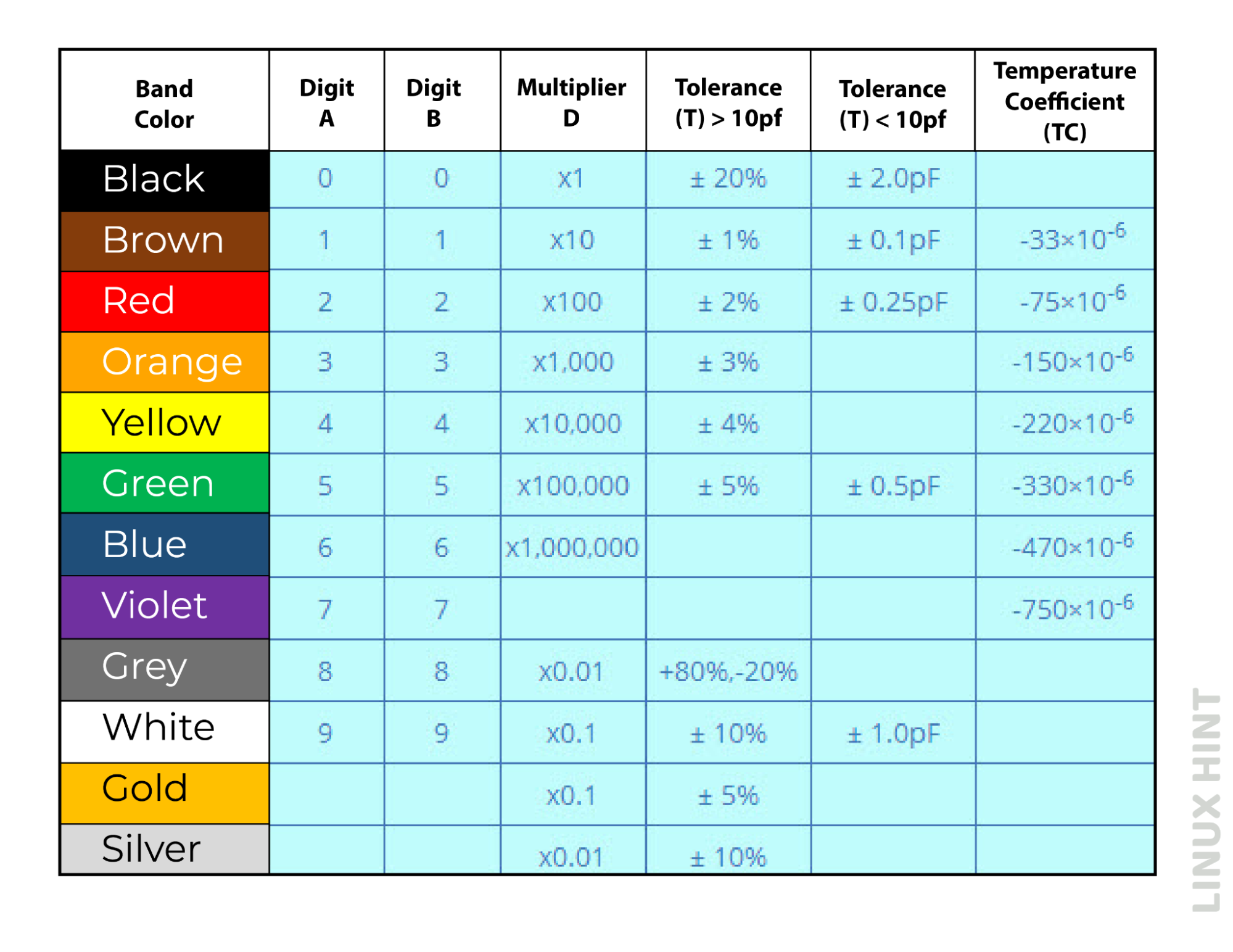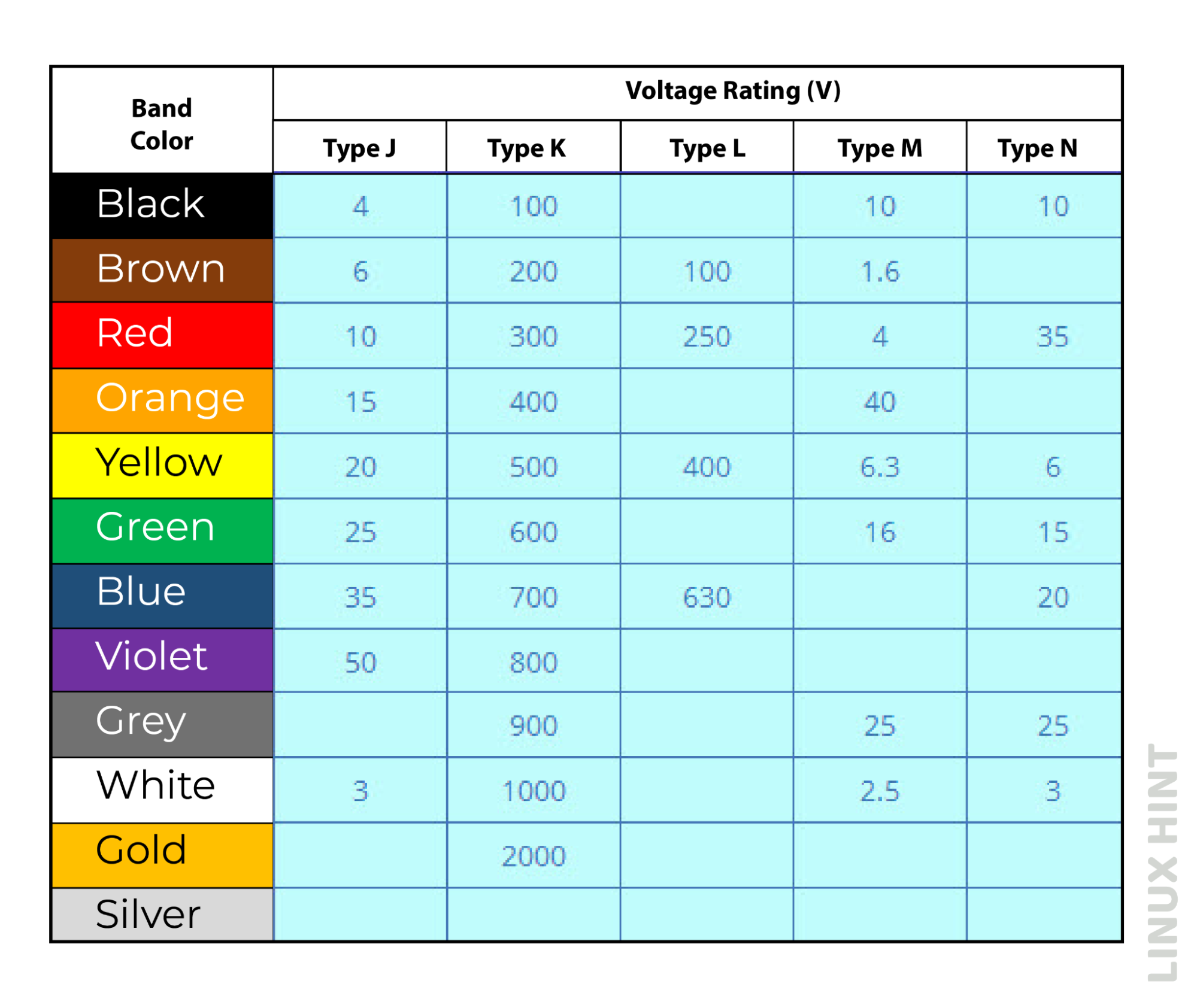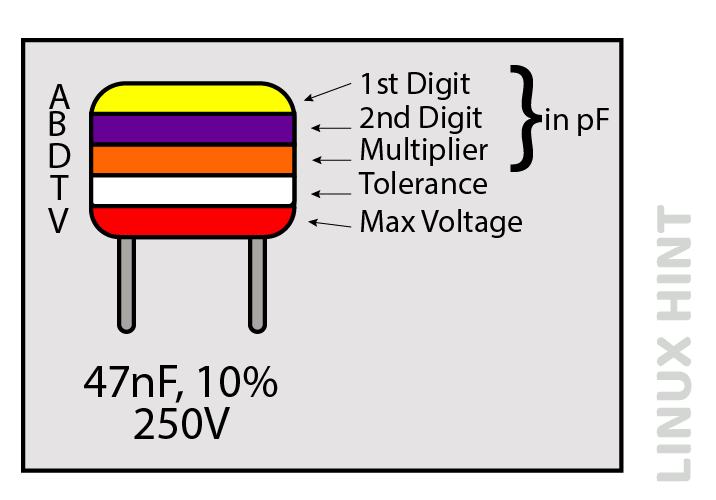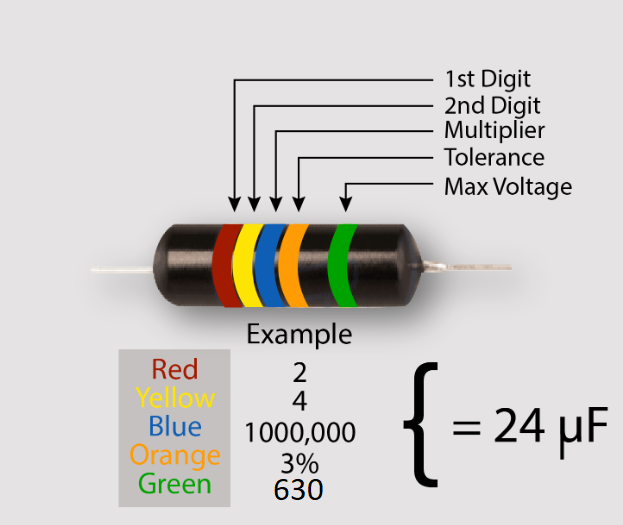Colour coding is used in electrical components to indicate the rating of different values of the component like resistors, inductors, and capacitors. The values are also written in alphanumeric on the electrical component, but the problem arises when the size of the components is so small to print the values on it. Most of the components have decimal values which are not easily to be noted and misreading occurs in such types of components and in that case colour coding comes into place.
Colour Coding in Capacitor
In capacitors, the values of capacitance, tolerance and voltage are also written in alphanumeric form and in colour coding. For small capacitors having capacitance less than 1000pF, if the number written is 104, then it means 104pF.
For large capacitors having a capacitance larger than 1000pF, the number 104 means, 100000pF. The first two digits represent the number value, and the third digit represents the multiple of ten or number of zeros. In the case of decimal values, it is difficult to note down the decimal point. Instead of writing the decimal point, ‘n’ for nano and ‘p’ for Pico is used.
For example, 6n5 means 6.5nF and n65 means 0.65nF, 6p5 means 6.5pF. Sometimes, the capital letter K is used to represent the value of a capacitor in terms of 1000pF, for example, 10kpF means 10 * 1000 = 10000pF. To avoid all such types of confusions in reading, colour coding is used to indicate the ratings of different values in capacitors.
There are four or more than four coloured dots or colour strips on the capacitors. The capacitance of the capacitor can be measured by using a multi-meter or the colour scheme printed on the capacitor.
The colour coding in capacitors is given by the following table.
Voltage Colour Coding in Capacitor
Some capacitors have five colour bands. The fifth colour band gives the maximum bearable voltage by the capacitor. The colour coding for the voltage of the capacitor is given as:
Here, type J are tantalum type capacitors, type K are of mica capacitors, type L are Polyester type capacitors, type M are electrolytic-4 capacitors and type N are electrolytic-3 capacitors.
How to Decode Capacitor Colour Codes
Mostly, there are four or more than four strips or dots present on the colour-coded capacitor. The first two colour bands give the numerical value, and the third colour band is the multiple number. Fourth one represents the value of the tolerance and fifth one represents the value of the maximum voltage that a capacitor can bear:
In this example, an L type polyester capacitor is shown. First and second colour strips, yellow for 4 and violet for 7 and on combining it makes 47. The third colour orange is a multiple of 1000. So, the exact value of capacitance is, 47000pF and as 1 Pico = 0.001 nano we get the answer as 47nF.
The fourth strip of colour gives the tolerance in the capacitor, which i10% white. The fifth red coloured strip represents the maximum voltage value of the capacitor. So, the maximum voltage that this capacitor can bear is 250V.
Example: Decoding capacitors colours
Find the value of the capacitance, tolerance and voltage of the capacitor if the colours shown on the capacitor are given as, red, yellow, blue, orange and green.
Pick the first two colours and find their numbers. 2 for red and 4 for yellow, on combining we have a number 24. The third blue is the multiplier number colour and have value 1000,000.
The fourth green colour gives the tolerance of the capacitor, which is 3%.
The fifth colour gives the voltage of the capacitor, which is blue.
For L-type capacitor, blue colour gives a value of 630. So, maximum voltage of the capacitor is 630V.
We have
Capacitance = 24000,000F = 24 µF
Tolerance = 3%
Voltage = 630V
Conclusion
Colour coding in a capacitor is the method of understanding the capacitance of capacitor, tolerance, and voltage. In large capacitors, the values are written in numeric form, but in small capacitors it makes it difficult, and many confusions arise in understanding the numerical reading on the capacitor. So, we use colour coding schemes in these types of capacitors.





